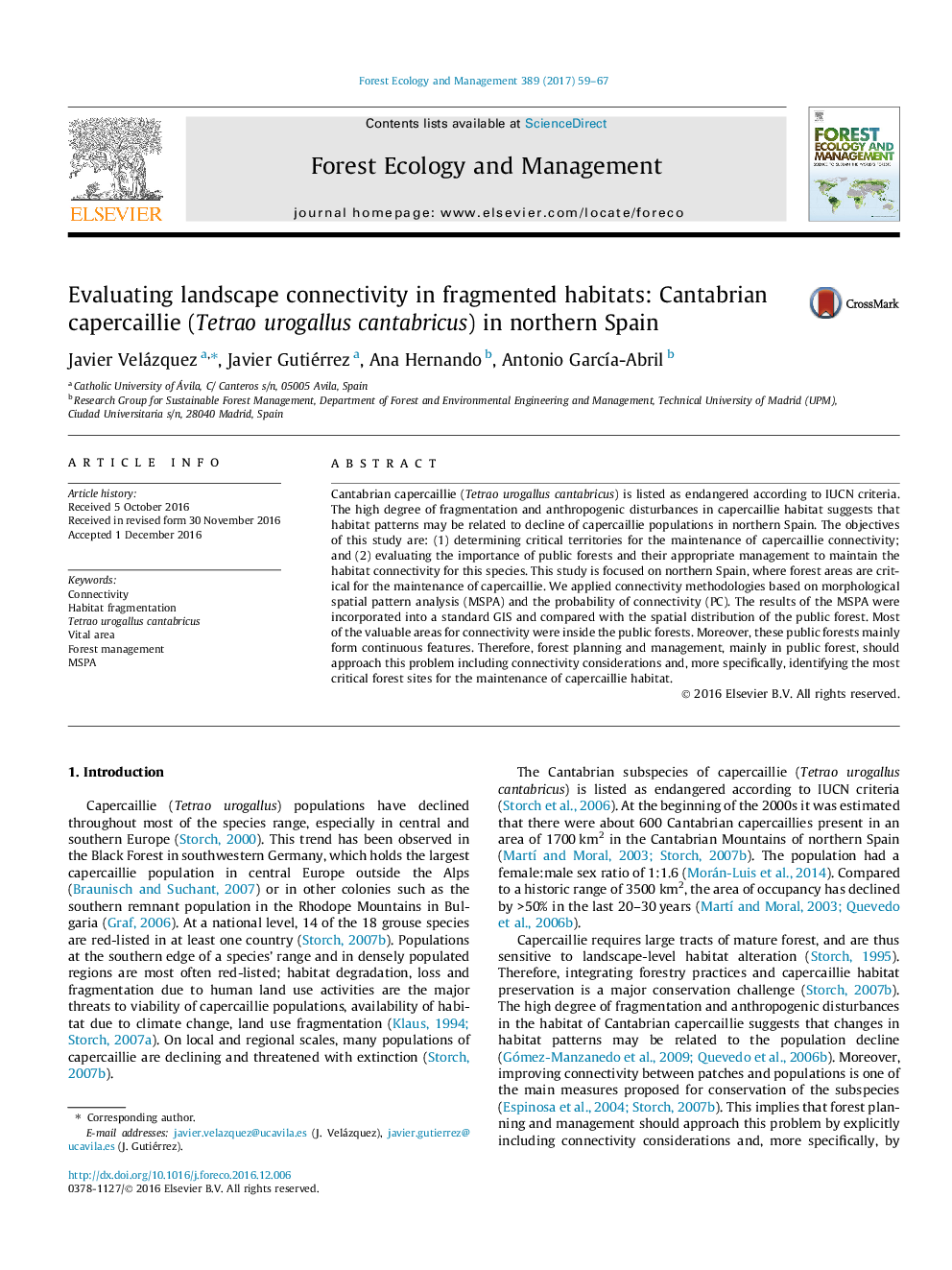| Article ID | Journal | Published Year | Pages | File Type |
|---|---|---|---|---|
| 4759489 | Forest Ecology and Management | 2017 | 9 Pages |
Abstract
Cantabrian capercaillie (Tetrao urogallus cantabricus) is listed as endangered according to IUCN criteria. The high degree of fragmentation and anthropogenic disturbances in capercaillie habitat suggests that habitat patterns may be related to decline of capercaillie populations in northern Spain. The objectives of this study are: (1) determining critical territories for the maintenance of capercaillie connectivity; and (2) evaluating the importance of public forests and their appropriate management to maintain the habitat connectivity for this species. This study is focused on northern Spain, where forest areas are critical for the maintenance of capercaillie. We applied connectivity methodologies based on morphological spatial pattern analysis (MSPA) and the probability of connectivity (PC). The results of the MSPA were incorporated into a standard GIS and compared with the spatial distribution of the public forest. Most of the valuable areas for connectivity were inside the public forests. Moreover, these public forests mainly form continuous features. Therefore, forest planning and management, mainly in public forest, should approach this problem including connectivity considerations and, more specifically, identifying the most critical forest sites for the maintenance of capercaillie habitat.
Related Topics
Life Sciences
Agricultural and Biological Sciences
Ecology, Evolution, Behavior and Systematics
Authors
Javier Velázquez, Javier Gutiérrez, Ana Hernando, Antonio GarcÃa-Abril,
